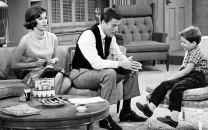7 signs you need reading glasses
Here are other unexpected clues you might be overlooking

PHOTO: FILE
You snooze off at your computer
The muscles in your eyes work hardest when you focus on close-up or detailed work, like when you’re reading or working on your laptop. If you need glasses, those muscles work even harder to help you see clearly. Because that isn’t a natural position for the eyes, they can get overly tired, which makes you feel drowsy. If reading glasses alone don’t help, try blinking more often or pushing your computer farther away from you. This will keep your eyes more relaxed.
You need brighter light to read
Your normal reading lamp doesn’t seem bright enough, so you turn on a bright light of the room, and then maybe even another one. If you never seem to have enough light, regardless of the room or type of lighting, sorry to disappoint, but it could be a sign that you need reading glasses. This becomes more prevalent as you age but don’t you stress because it’s a normal condition. Studies prove that the average 60-year-old needs at least three times the amount of light as a 20-year-old.
You get an arm workout while reading
Who would have thought that the way you hold a book can be one of the most telling signs that your eyesight is failing you? If you are near-sighted, which is when you can’t see far away, you’ll bring a book about 12 inches or less toward your face. If you’re far-sighted, which is when you can’t see up close, you might need to hold the book at arm’s length. Make sure to remember this one rule — if an object held 14 inches from your face is blurry, you may need to book an appointment with your ophthalmologist.
You get recurring headaches
Eyestrain from working with few breaks can also make you more vulnerable to headaches or your recurrent headaches worse. If the headache is right behind your eyes, the cause could be hyperopia or far-sightedness or astigmatism, which is when objects look blurry at certain angles due to the cornea’s shape. Worry not though, because both problems can be easily amended with glasses. Be sure to take frequent breaks when doing work that can strain your eyes. Doctors around the world recommend the 20-20-20 rule — every 20 minutes, look at something at least 20 feet away for 20 seconds.
You never touch leafy greens
If you think gaajar is the only vegetable you need for healthy eyes, you could be missing out on the benefits of leafy greens, such as paalak. These foods contain lutein and zeaxanthin, antioxidants that help keep your eyes’ lenses clear, reducing the risk for cataracts and your odds of needing glasses of any sort. One cup of spinach can have as much as 26.5 mg of lutein and zeaxanthin, depending on how it is prepared — the less you cook it, the better. One serving of carrots have less than one milligram of both, so the choice is yours!
You see halos, literally
Another common symptom that is most often ignored — when your eyes cannot properly focus light into your retina, the light can become blurred or scattered. As a result, you may see bright circles appear around lights of various shapes and sizes, from light bulbs or car headlights. Glasses are usually a quick fix for this problem. However, halos are also a common symptom of cataracts, especially along with cloudy vision. If you see halos, make sure to talk to your doctor immediately.
You’re 40 plus
Another normal occurrence that you don’t need to get all tense about — once you hit your 40s, you’re almost guaranteed to experience one or more of the previous symptoms, thanks to presbyopia. Presbyopia is a condition where the eyes gradually lose their ability to focus on nearby objects — though it’s not the same as farsightedness. Symptoms typically begin to appear in your early to mid-40s and can continue to worsen until your 60s. Luckily, this natural aging process has a simple solution — reading glasses. So, fear not and rock your reading glasses like a boss — on the plus side, they do make you appear more intellectual!
Published in The Express Tribune, March 14th, 2016.
Like Life & Style on Facebook, follow @ETLifeandStyle on Twitter for the latest in fashion, gossip and entertainment.



















COMMENTS
Comments are moderated and generally will be posted if they are on-topic and not abusive.
For more information, please see our Comments FAQ